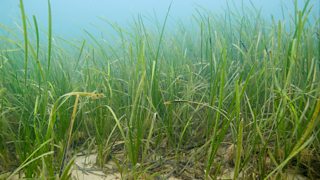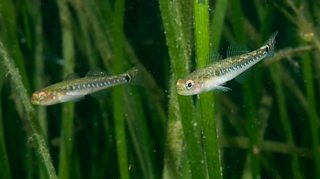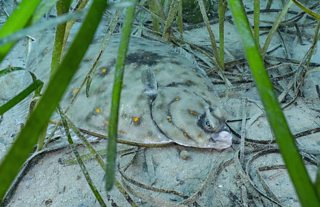The underwater wonder plant: seagrass
Marine Conservation Society (MCS)
Partner organisation of the Watches
Whilst many of us are aware of the incredible role of forests, meadows and green space on land, it’s easy to overlook the swaying meadows and forests lurking beneath the water’s surface.
Seagrass meadows, which have been growing in the UK’s shallow waters for thousands of years, are one of the most productive marine habitats around the UK’s coastline, a habitat which is crucial not only as a home for marine life, but also in the fight against climate change. Here are just some of the reasons why seagrass is a wonder plant…

Eelgrass bed Studland 漏 Paul Naylor
Carbon storage
Seagrass is one of the most important species – and habitats – in the sea for locking in CO2. It’s extremely effective at absorbing CO2 dissolved in seawater, taking it up in its tissues and locking it into sediment in the seabed, so helping in the fight against climate change. Seagrass absorbs a massive 10% of the carbon buried in ocean sediment every year. In fact, seagrass meadows have been shown to be 35 times more effective at locking in carbon than the same area of rainforest.
Protecting coasts
As sea levels rise and the UK’s coastline continues to be eroded, the power of crashing waves needs to be buffered. Rich, healthy seagrass beds can reduce the power of waves which are washing away our sheltered coves and beaches.

Two spot gobies in eelgrass 漏 Paul Naylor
Providing food
Seagrass beds are essential nurseries and egg-laying habitats for species as diverse and important as cod, crabs, cuttlefish and sharks. Marine meadows offer a safe haven for commercially valuable species to eat and lay eggs.
Providing shelter
Not only are seagrass meadows highly productive and vital ecosystems, they’re also biodiversity hotspots, over 180 different species have been found sheltering amongst the dense blades. The perfect place to hide, seagrass is a complex ‘forest’ which offers shelter for many animals, including the two species of seahorse which live in UK waters: the spiny seahorse and the short snouted seahorse. Other protected species including stalked jellyfish and rare seaweeds find safe shelter amongst the marine meadows of seagrass and maerl. Not only is marine life sheltered by the blades, but so is the earth beneath, with seagrass root systems reaching beyond five metres into sand and sediment. Seagrass meadows increase the organic enrichment of the sand and muds around their root systems. Such important shelter and food is vital for mussels, shrimp, anemones and other critters or ‘invertebrates’ to live.

Plaice in seagrass Cawsand 漏 Paul Naylor
